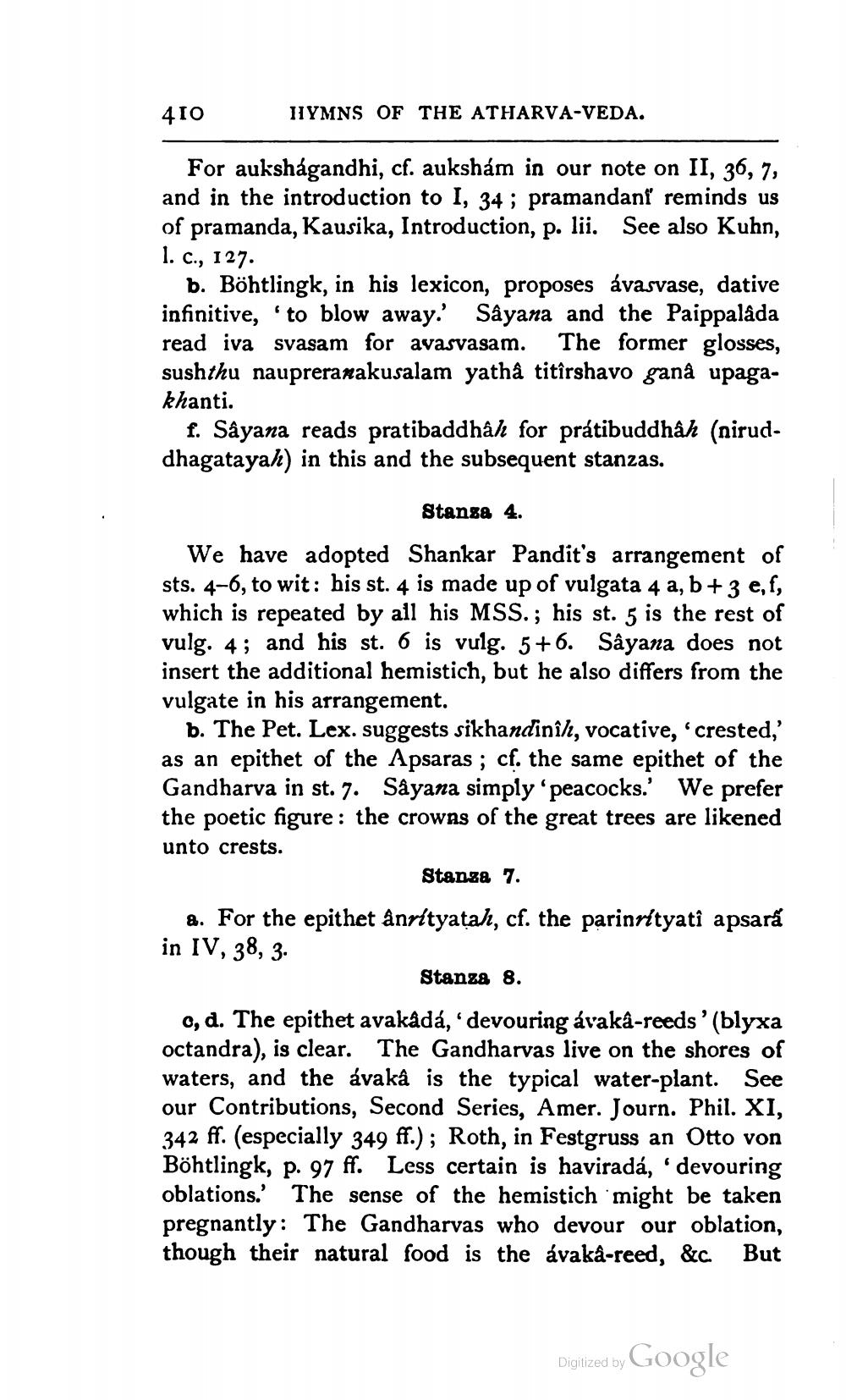________________
410
IIYMNS OF THE ATHARVA-VEDA.
For aukshágandhi, cf. aukshám in our note on II, 36, 7, and in the introduction to I, 34 ; pramandani reminds us of pramanda, Kausika, Introduction, p. lii. See also Kuhn, 1. c., 127.
b. Böhtlingk, in his lexicon, proposes ávasvase, dative infinitive, to blow away. Sâyana and the Paippalada read iva svasam for avasvasam. The former glosses, sushthu naupreranakusalam yatha titîrshavo gana upagakhanti.
f. Sâyana reads pratibaddhah for prátibuddhah (niruddhagatayah) in this and the subsequent stanzas.
Stanga 4. We have adopted Shankar Pandit's arrangement of sts. 4-6, to wit: his st. 4 is made up of vulgata 4 a, b + 3 e, f, which is repeated by all his MSS.; his st. 5 is the rest of vulg. 4; and his st. 6 is vulg. 5+6. Sâyana does not insert the additional hemistich, but he also differs from the vulgate in his arrangement.
b. The Pet. Lex. suggests sikhandinih, vocative, 'crested, as an epithet of the Apsaras ; cf. the same epithet of the Gandharva in st. 7. Såyana simply 'peacocks.' We prefer the poetic figure: the crowns of the great trees are likened unto crests.
Stansa 7. 2. For the epithet anrltyatah, cf. the parinrityatî apsará in IV, 38, 3.
Stanza 8. 0, d. The epithet avakadá, ' devouring ávaka-reeds '(blyxa octandra), is clear. The Gandharvas live on the shores of waters, and the avaka is the typical water-plant. See our Contributions, Second Series, Amer. Journ. Phil. XI, 342 ff. (especially 349 ff.); Roth, in Festgruss an Otto von Böhtlingk, p. 97 ff. Less certain is haviradá, devouring oblations. The sense of the hemistich might be taken pregnantly: The Gandharvas who devour our oblation, though their natural food is the avaka-reed, &c. But
Digized by Google
Digitized by




